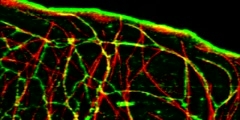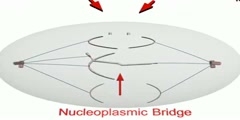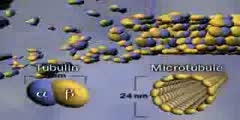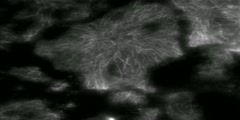Dynamic instability of microtubules (under microscope)
Video shows growth and shrinkage of microtubules. More info about dynamic instability of microtubules: Microtubules may grow steadily, and then shrink rapidly by loss of tubulin dimers at the plus end. The rapid disassembly is referred to as catastrophe. In vitro, the tendency to grow or shrink may be a function of tubulin concentration. As microtubules grow, tubulin dimers are depleted. Below a critical tubulin concentration, rapid shrinkage at the plus end has been attributed to loss of a "GTP cap." Hydrolysis of GTP by b-tubulin, as polymerization brings it into contact with a-tubulin, takes time. A rapidly growing microtubule may accumulate a few layers of tubulin-GTP at the plus end. A GTP cap stabilizes the plus end of a microtubule. If the concentration of tubulin heterodimers is low, dissociation of tubulin-GTP may expose tubulin-GDP at the plus end, causing that end to become unstable. Rapid shrinkage ensues. Fraying or curving of protofilaments is observed at the ends of rapidly disassembling microtubules. This may be due to a change in conformation when b-subunits at the plus end have bound GDP instead of GTP. Tubulin heterodimers with GDP bound to the b subunit form ring shaped assemblies in vitro. Straight protofilaments form only when both tubulins have bound GTP. Dynamic instability of microtubules in vivo is regulated by interaction with other proteins. For example, during prophase of mitosis, microtubules grow out from the centrosome. If the plus end of a microtubule makes contact with a chromosome, it becomes stabilized. Otherwise rapid disassembly at the plus end ensues, and the tubulin dimers are available for growth of another microtubule. Text Ref: http://www.rpi.edu/dept/bcbp/molbiochem/MBWeb/mb2/part1/microtub.htm
Channels: Cell Biology Molecular Biology
Tags: dynamic instability microtubule
Uploaded by: mnazirokur ( Send Message ) on 30-03-2007.
Duration: 0m 32s














